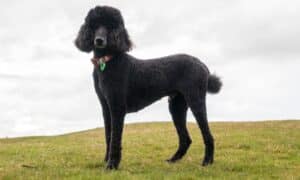“This post contains affiliate links, and I will be compensated if you make a purchase after clicking on my links.”
ICECDogs has released new advertising guidelines on Friday, July 12, in an effort to end the use of images of dogs with conformation issues in advertising.
The International Collaborative on Extreme Conformations in Dogs (ICECDogs) is recommending that advertisers and other users of social media to stop using images of dogs with extreme conformation.
They instead recommend that advertisers use images that promote healthy conformation in dogs.
The organization wrote in a statement, “Although extreme conformation (extreme body appearance) is responsible for considerable unnecessary suffering in dogs, public acceptance and normalization of unnatural conformations sadly remains common.”
“The use of images of dogs with extreme body appearance for marketing, promotional or entertainment purposes is considered a major contributor to widespread public acceptance of, and high demand for, dogs with extreme body features,” they explained.
In ICECDogs’ guidelines, they listed down descriptions of dogs that should not be used in advertisement:
- Flat-faces (brachycephaly). This commonly leads to health issues including difficulty breathing and eye ulcers in dogs.
- Clearly overshot or undershot jaw. This physical characteristic can affect a dog’s ability to eat and it promotes dental disease.
- Large and protruding eyes. This poses increased risk of eye damage and infection.
- Shortened twisted legs (chondrodysplasia). Affected dogs with excessively short legs and a disproportionately long body frequently suffer spinal and neurological problems.
- Facial and body skin folds. These folds commonly lead to skin infections and pain.
- Bulging or domed skull. This is associated with brain diseases such as hydrocephalus and brain herniation.
- Eyelids turned-in (entropion: eyelashes or hair rubbing on cornea) or turned-out (ectropion: drooping eyelids so the front of the eye is not cleaned with each blink) commonly lead to lifelong painful eye problems such as infections and corneal ulcers.
- Tailessness or deformed twisted at birth. Affected dogs communicate less effectively with other dogs without a tail.
- Disproportionately broad head and shoulders. When combined with a narrow pelvis, often results in inability to deliver puppies without surgical intervention.
- A sloped back with excessively low rear end and excessively flexed hind legs are commonly associated with locomotion problems.

Example of breeds that commonly show physical extreme conformation are Basset Hound, Boston Terrier, Dachshund, English Bulldog, French Bulldog, German Shepherd Dog, Neopolitan Mastiff, Pekingese, Pug, Sharpei, and Welsh Corgi.
ICECDogs do not condemn these dogs and understand that not all of them will suffer throughout their life due to these conformations.
However, they explained that the general public “often struggle to distinguish between what constitutes an extreme versus an acceptable conformation within a breed”.
Dr Dan O’Neill, Chair of the UK Brachycephalic Working Group, Associate Professor for Companion Animal Epidemiology at the Royal Veterinary College, London, and co-founding ICECDogs member, tells Psychology Today what the aim of the new guidelines is saying,
“This new ICECDogs message calls on advertisers to play their part in ending the normalization of suffering from extreme body shapes and will hopefully contribute to the ongoing worldwide movement to instead celebrate healthy body shapes in dogs.”
If advertisers are in doubt if a particular dog shows extreme conformations in an image, ICECDogs’ general advice is to not use the image at all.
“With ready access to images of hundreds of dog breeds and types that do not show extreme conformation, there is no longer any animal welfare justification for inappropriate sharing of images of dogs with extreme conformation,” ICECDogs explains.












